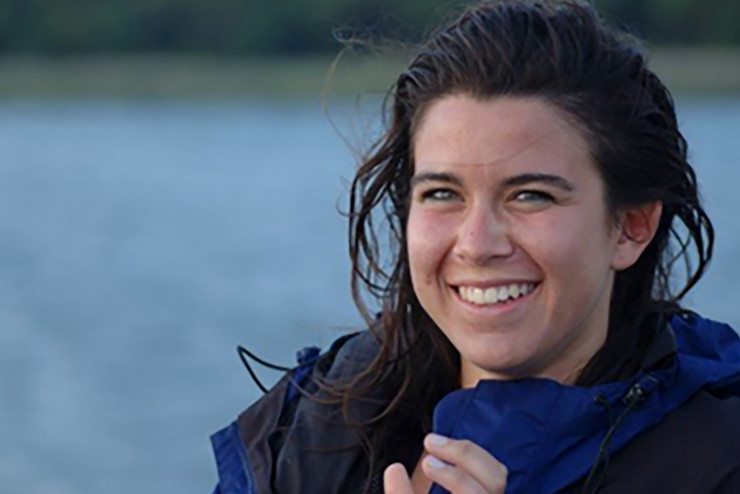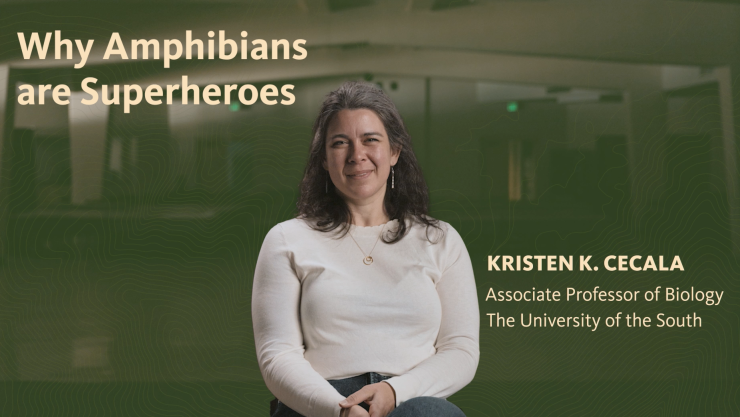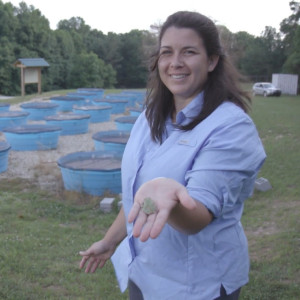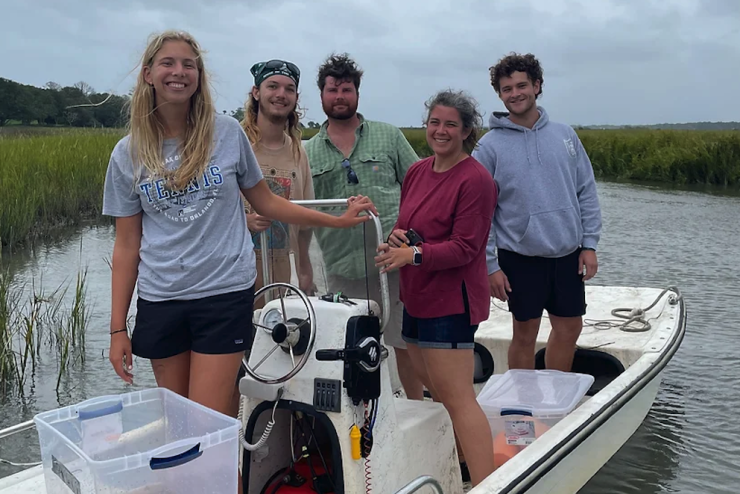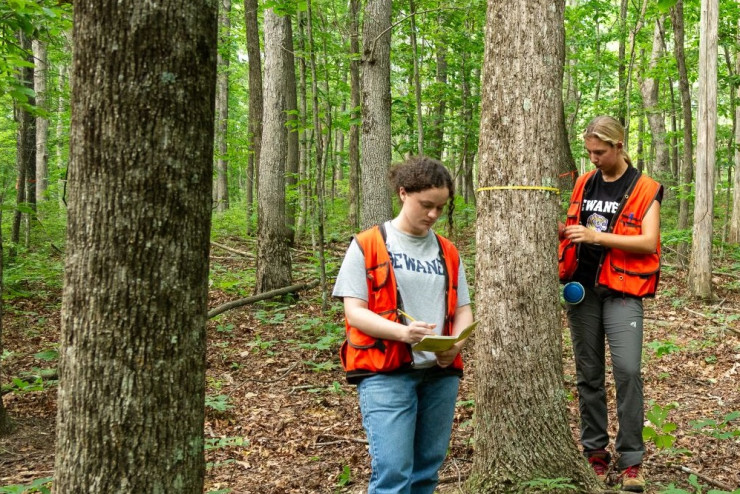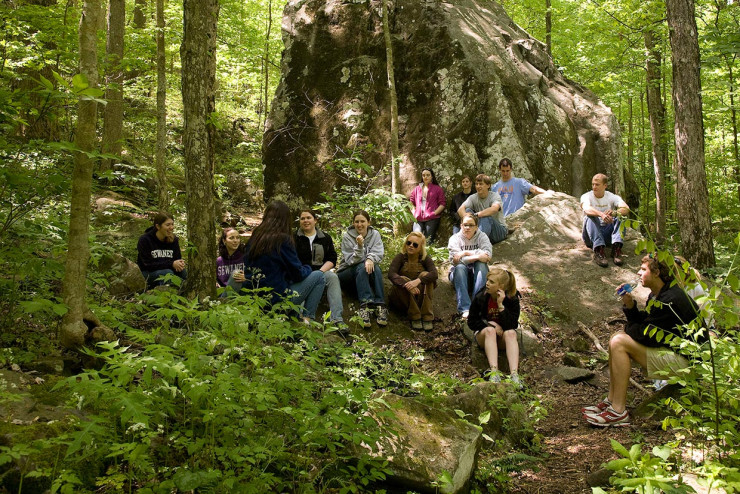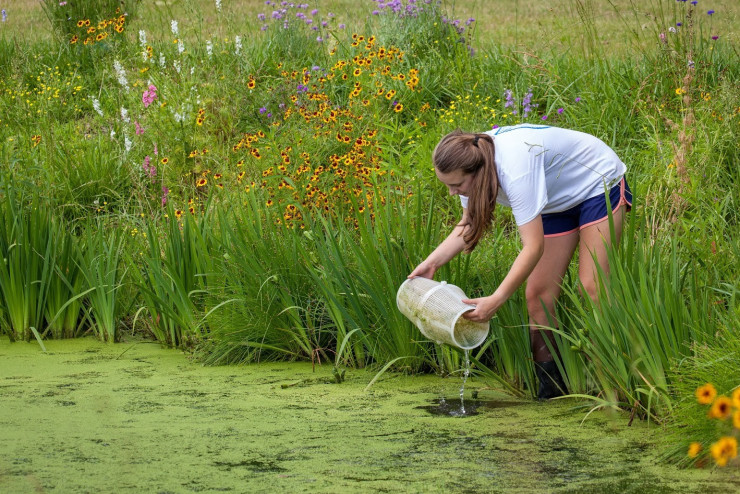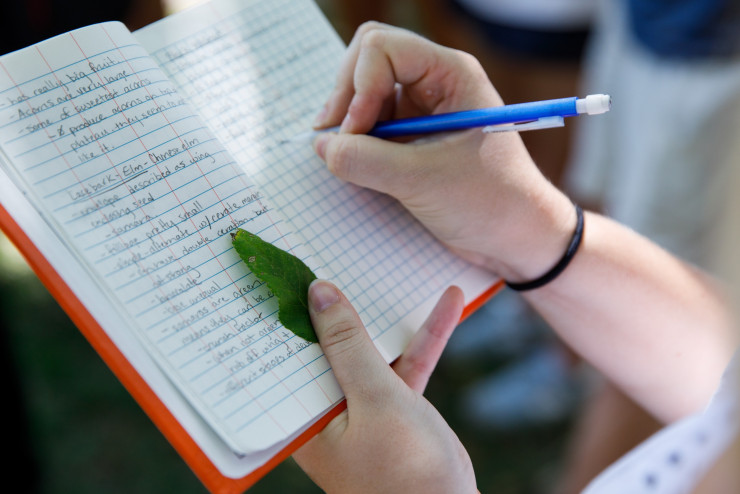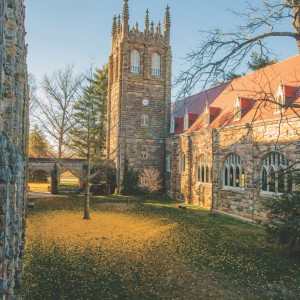Nature's Superheroes
If you were to take a solo hike out to the middle of the forest, where the only sounds piercing the silence would be the buzzing of bugs or the distant calls of birds, you could be forgiven for thinking you were all alone.
But a peek under a log might quickly dispel that notion, as you’re likely to find some eyes staring back at you. Small, quick, and populating forests like Sewanee’s Domain by the hundreds of thousands, amphibians often go unnoticed by humans as we go about our normal activity. Yet for Kristen Cecala, associate professor of biology, that relative invisibility belies the truth about amphibians—that they are nature’s superheroes.
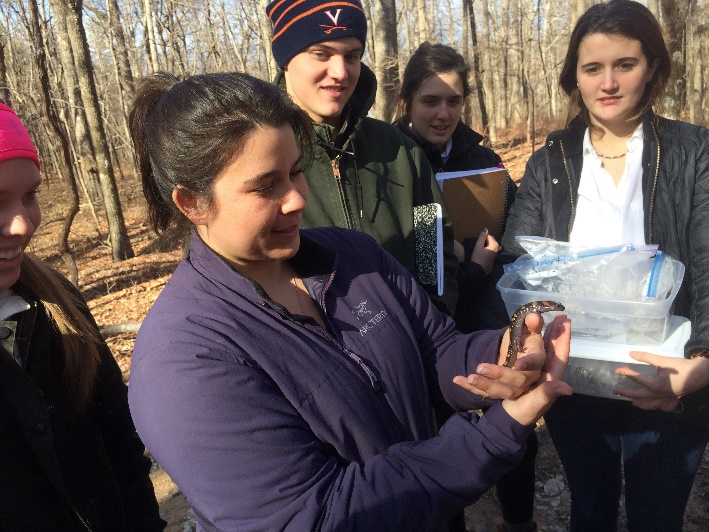
Belonging to a class of animals that includes, among others, frogs, toads, salamanders, and newts, amphibians are notable for their permeable skin and lack of scales, nails, and claws. Their permeable skin allows for gas exchange, meaning amphibians like the lungless salamander (or plethodontidae), can take oxygen in and move carbon dioxide out without having any lungs.
That difference, however, represents just the tip of the iceberg when it comes to amphibians’ superheroic abilities, some of which sound like they come straight out of a Marvel comic book. Because of their circulating stem cells, there are amphibians that are able to regrow entire limbs—or even parts of their brain. Thanks to bones that are made of cartilage, there are salamanders that can, when faced with danger, shoot their ribs through their skin for protection. “Essentially, they have little sharp knives that are hanging out along their entire body,” says Cecala. “And then when the threat is gone, they bring them back inside their body, they heal their skin, and they go about like it's normal.”
There’s even a frog that evokes the popular X-Men character Wolverine. When faced with a fight, it’s capable of breaking its thumb and extending the bone outside of its skin to weaponize in the same way Wolverine extends his metallic claws.
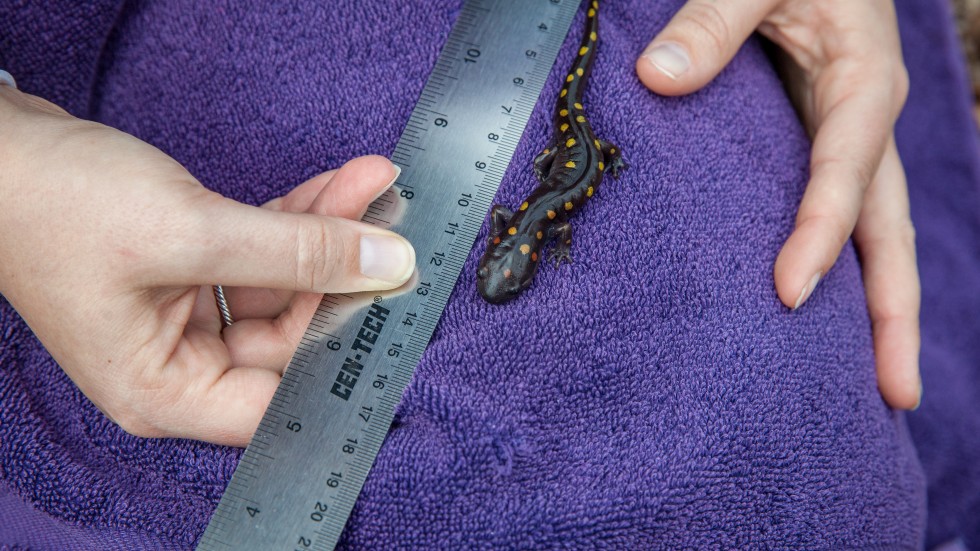
And while they may not directly save lives in the manner of, say, a Superman or a Spider-Man, amphibians nonetheless occupy their own heroic place in the world’s ecosystems. “As cute as they are, most juvenile amphibians are meant to be eaten by other things in the forest. So they take that energy from our wetlands where it's trapped and they move it back up into the forest ecosystem,” says Cecala.
As we investigate amphibians’ regenerative capabilities or how they manage acid in their bodies or the pain-killing compounds they produce, we also have to consider how what we learn might one day help to heal human maladies. “Even if we don't necessarily care about the innate value of amphibians or the role that they play within ecosystems, there are medical advances that wouldn't be possible without having these amphibians around for us to study,” says Cecala.
But the role they do play within ecosystems may still prove to be the most important. Though they’ve been around for hundreds of millions of years, amphibians are intensely sensitive to changes in their environment. A few degrees of warming set against millions of years of adaptation may not seem like much, but those few degrees are likely to, for instance, force the salamanders upon which a forest’s food chain depends to relocate, setting off a chain reaction of effects within our local ecosystems.
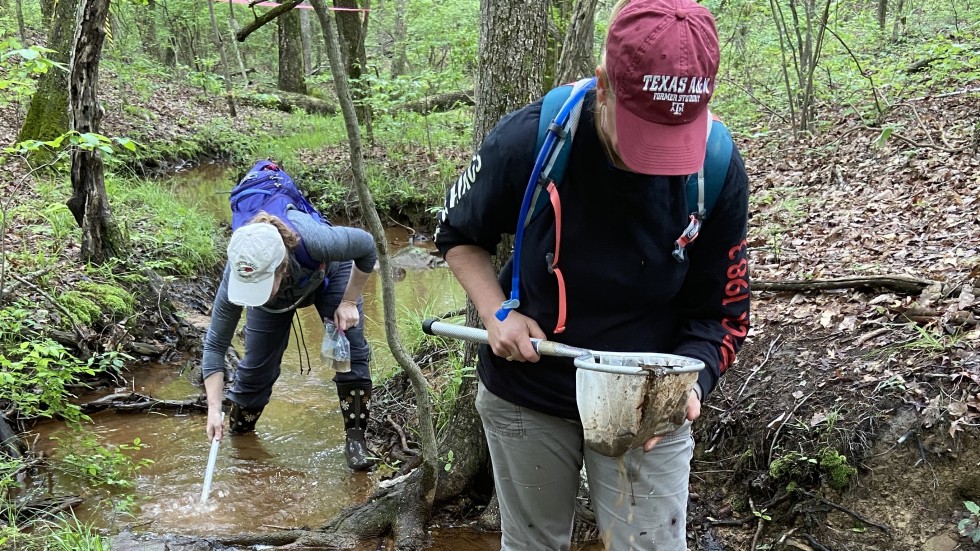
Amphibians’ sensitivity to change can also serve as a warning sign of the potential environmental challenges ahead of us. “If a salamander can't be successful in the streams that ultimately feed our own drinking water, what does that say about the quality of the water and the services that our environment is able to provide to us?” asks Cecala. “They're going to be the first ones to change, but who's to say that those changes aren't then going to translate to things that we are going to notice and be affected by?”
To start to answer those questions, concludes Cecala, we have to stop overlooking nature’s small but mighty heroes, and start listening to what the amphibians have to tell us.
